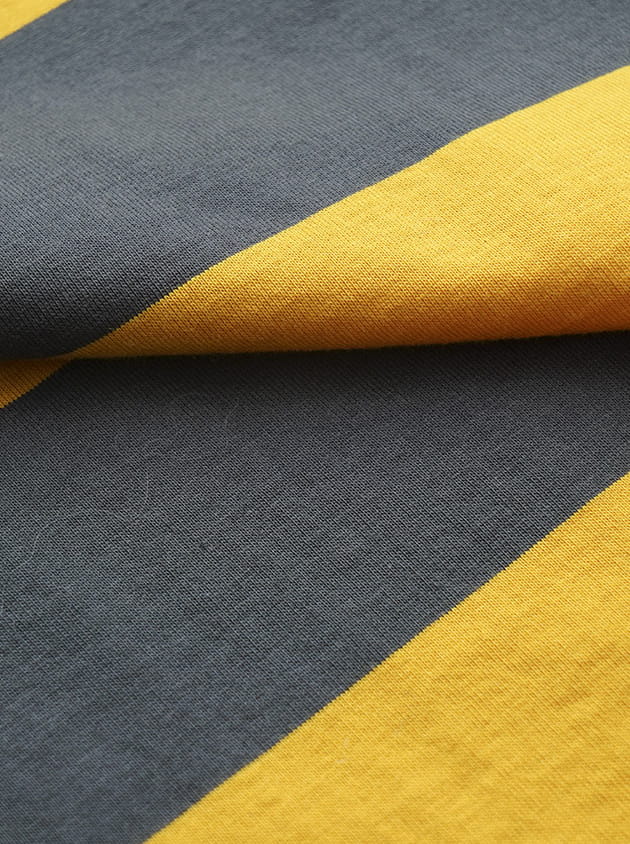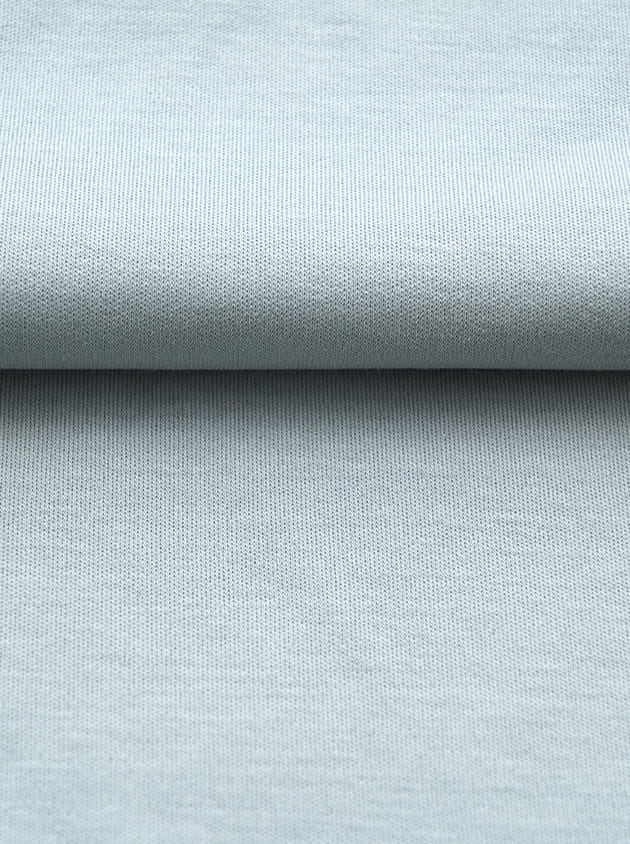The Benefits of Rib Fabric
Update:05 Aug
If you're a knitter, you've probably noticed a pattern called ribbing. It's basically a pattern of stripes, either reversed or vertical, of reverse stockinette stitch. When used in clothing, ribbing has the effect of making items appear thicker or thinner than they really are. You can make ribbing from fabric scraps, too. Read on to learn more about the benefits of rib fabric.
The width of a neckband is approximately an inch, so you'll need to cut a rib fabric that measures three inches wide. This will allow you to add a 0.5-inch seam allowance, making it about three-fourths of the neck opening. You can always add more ribbing to the band by drafting the neckline wider and securing the seam allowance. However, remember that you'll have to unsew the band if you want to make adjustments later.
Another type of rib fabric is called double-knit, which has many similarities with rib knit. It is made with two needles, allowing it to have more than one layer. It is also known as double-faced rib, and it makes great clothing for pants, skirts, and tanks. You can also knit with interlock fabric, which is a double-faced rib. As you can see, this fabric can be a great choice for clothing that requires a tight fit.
One downside of rib knit is that it is a stretchy fabric. Printing on rib knits with regular ink or reduced viscosity ink will distort. Therefore, water-based ink is best for rib knit fabrics. Additionally, make sure to use ink with a stretch additive. This will allow you to print both the high and low areas of the ribs. This way, you can still get a high-quality, professional print, and it won't look cheap!
Another type of knit fabric is rib knit. This type of fabric is easily identifiable, as it features raised textured vertical lines. There are two basic types of rib knit fabric: 1x1 rib, and 2x2 rib. Each type has a different pattern, but both have the same basic design: rib knit fabrics are characterized by raised vertical lines. If you're looking for a unique knit fabric for a specific project, rib knit is a great choice.
Another benefit of rib fabric is its ease of care. Unlike many other fabrics, rib knit fabrics don't suffer from chemical toxicity during construction. The natural yarn knitting method used to produce rib knit fabric does not involve the use of rubber or nylon. Rib knit fabrics are also known to be more durable than jersey knit fabrics. You can wash and iron them without worrying about damaging your health. This makes them an excellent option for clothing items.
Knit ribs are most commonly created by alternating two sets of knitting needles. A 2x2 knit rib is created by knitting two stitches, followed by one stitch. A 3x2 rib is made of three knit stitches and one purl stitch. There are two other types of rib knit, the 3x2 rib and the 6x1 rib. You can choose any of these to match any style of clothing.
Sewing rib knits can be challenging for beginners. You want to avoid stretching the material, but a walking foot will help you sew rib knits evenly without stretching the material. This foot also helps to feed the fabric evenly. A walking foot will help you reduce the tension in the feed dogs, so your garments will come out looking beautiful. If you have a serger, you can also use the walking foot to reduce the risk of overstretching.
A rib knitted fabric is double-faced and reversible. These fabrics are produced by placing cylinder needles crosswise to cap needles in double-plate circular knitting machines. The ribs are either thin or thick, and there's a mixture of reverse and face stitches on the fabric. These fabrics are also prone to stretch and have excellent natural recovery properties. This makes them perfect for trimming other knits.
A ribbed t-shirt is a staple of any wardrobe. Its distinctive pattern and raised lines, or "ribs," are what make them unique. These t-shirts are made using a knitting technique called rib knit. In alternating knits, yarn is knitted in a knit-purl pattern. This method makes the fabric more stable and comfortable. So, what's the best part about wearing a rib knit t-shirt?

The width of a neckband is approximately an inch, so you'll need to cut a rib fabric that measures three inches wide. This will allow you to add a 0.5-inch seam allowance, making it about three-fourths of the neck opening. You can always add more ribbing to the band by drafting the neckline wider and securing the seam allowance. However, remember that you'll have to unsew the band if you want to make adjustments later.
Another type of rib fabric is called double-knit, which has many similarities with rib knit. It is made with two needles, allowing it to have more than one layer. It is also known as double-faced rib, and it makes great clothing for pants, skirts, and tanks. You can also knit with interlock fabric, which is a double-faced rib. As you can see, this fabric can be a great choice for clothing that requires a tight fit.
One downside of rib knit is that it is a stretchy fabric. Printing on rib knits with regular ink or reduced viscosity ink will distort. Therefore, water-based ink is best for rib knit fabrics. Additionally, make sure to use ink with a stretch additive. This will allow you to print both the high and low areas of the ribs. This way, you can still get a high-quality, professional print, and it won't look cheap!
Another type of knit fabric is rib knit. This type of fabric is easily identifiable, as it features raised textured vertical lines. There are two basic types of rib knit fabric: 1x1 rib, and 2x2 rib. Each type has a different pattern, but both have the same basic design: rib knit fabrics are characterized by raised vertical lines. If you're looking for a unique knit fabric for a specific project, rib knit is a great choice.
Another benefit of rib fabric is its ease of care. Unlike many other fabrics, rib knit fabrics don't suffer from chemical toxicity during construction. The natural yarn knitting method used to produce rib knit fabric does not involve the use of rubber or nylon. Rib knit fabrics are also known to be more durable than jersey knit fabrics. You can wash and iron them without worrying about damaging your health. This makes them an excellent option for clothing items.
Knit ribs are most commonly created by alternating two sets of knitting needles. A 2x2 knit rib is created by knitting two stitches, followed by one stitch. A 3x2 rib is made of three knit stitches and one purl stitch. There are two other types of rib knit, the 3x2 rib and the 6x1 rib. You can choose any of these to match any style of clothing.
Sewing rib knits can be challenging for beginners. You want to avoid stretching the material, but a walking foot will help you sew rib knits evenly without stretching the material. This foot also helps to feed the fabric evenly. A walking foot will help you reduce the tension in the feed dogs, so your garments will come out looking beautiful. If you have a serger, you can also use the walking foot to reduce the risk of overstretching.
A rib knitted fabric is double-faced and reversible. These fabrics are produced by placing cylinder needles crosswise to cap needles in double-plate circular knitting machines. The ribs are either thin or thick, and there's a mixture of reverse and face stitches on the fabric. These fabrics are also prone to stretch and have excellent natural recovery properties. This makes them perfect for trimming other knits.
A ribbed t-shirt is a staple of any wardrobe. Its distinctive pattern and raised lines, or "ribs," are what make them unique. These t-shirts are made using a knitting technique called rib knit. In alternating knits, yarn is knitted in a knit-purl pattern. This method makes the fabric more stable and comfortable. So, what's the best part about wearing a rib knit t-shirt?

Recommended Products
-

WBCT002 32SJC AND 20D Jerse Fabric
-

WBHB20003 50%Modal 50%Cotton Jersey cloth Fabric
-

WBHB20004 100%Cotton Striped Polo Long Jerse Fabric
-

WBLW20001 53.3%Cotton 2*2 RIB Knit Fabric
-

Ribbing-WBLW20003WBLW20003 Light gray 56.4%Cotton 2*2 RIB Knit Fabric
-

WB17011-1 95% Cotton Looped 2x2 Rib Knit Fabric
-

WB17042-1 100%Cotton 2*2 Rib Knit Fabric
-

WB17137 Light Green 97%Poly Ottoman knit fabric
-

WB18009 2x2 Rib French Terry 90.9%Poly
-

WBMM19002 100%Cotton Mercerized cotton wool cloth

 English
English 中文简体
中文简体
